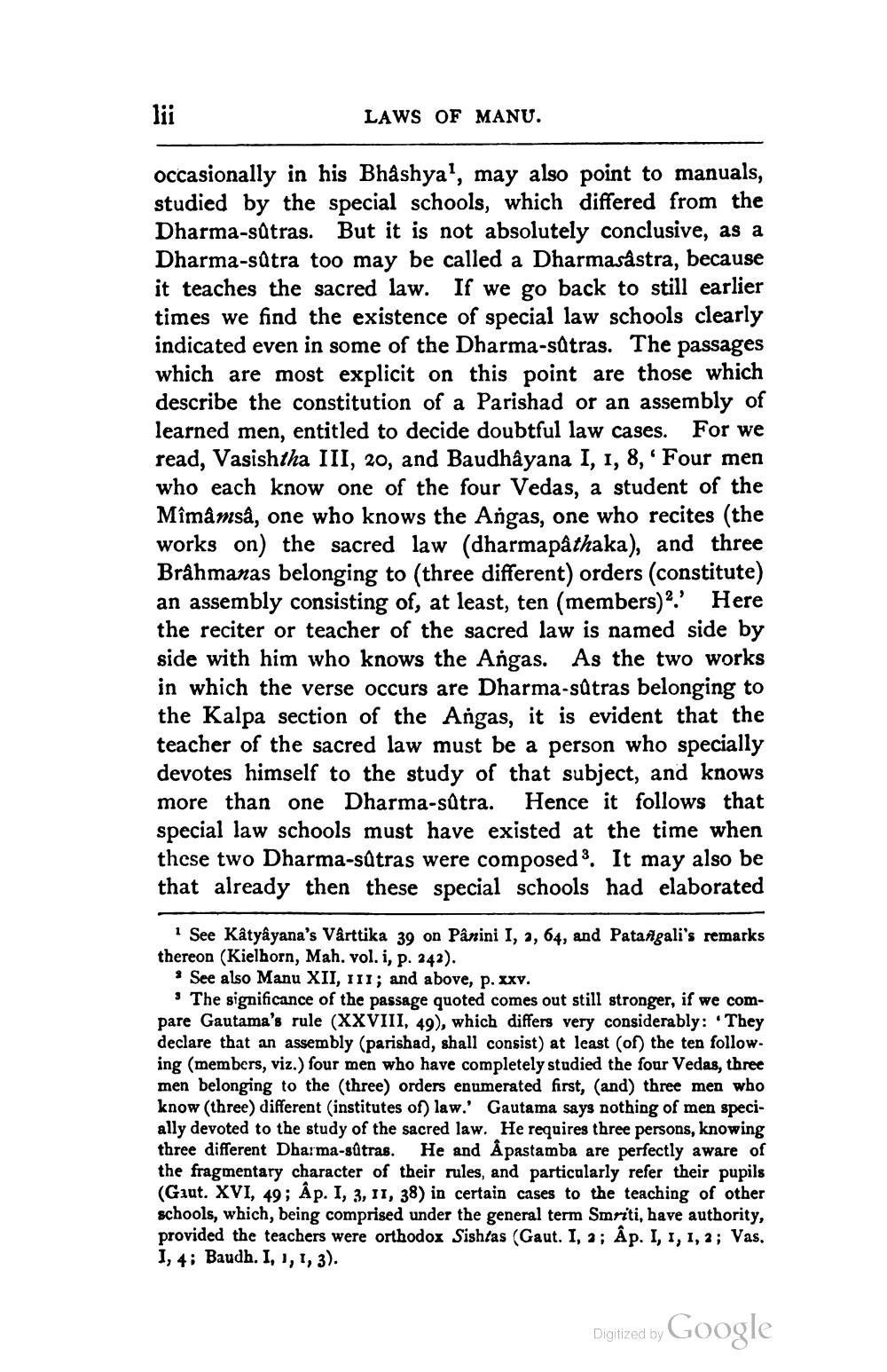________________
1111
LAWS OF MANU.
occasionally in his Bhashya', may also point to manuals, studied by the special schools, which differed from the Dharma-sâtras. But it is not absolutely conclusive, as a Dharma-sätra too may be called a Dharmasastra, because it teaches the sacred law. If we go back to still earlier times we find the existence of special law schools clearly indicated even in some of the Dharma-satras. The passages which are most explicit on this point are those which describe the constitution of a Parishad or an assembly of learned men, entitled to decide doubtful law cases. For we read, Vasishtha III, 20, and Baudhayana I, 1, 8,' Four men who each know one of the four Vedas, a student of the Mîmâmså, one who knows the Angas, one who recites (the works on the sacred law (dharmapathaka), and three Brâhmanas belonging to (three different) orders (constitute) an assembly consisting of, at least, ten (members).' Here the reciter or teacher of the sacred law is named side by side with him who knows the Angas. As the two works in which the verse occurs are Dharma-sůtras belonging to the Kalpa section of the Angas, it is evident that the teacher of the sacred law must be a person who specially devotes himself to the study of that subject, and knows more than one Dharma-sútra. Hence it follows that special law schools must have existed at the time when these two Dharma-sútras were composed. It may also be that already then these special schools had elaborated
See Kâtyâyana's Varttika 39 on Panini I, 2, 64, and Patangali's remarks thereon (Kielhorn, Mah. vol. I, p. 242). * See also Manu XII, 111; and above, p. xxv.
The significance of the passage quoted comes out still stronger, if we compare Gautama's rule (XXVIII, 49), which differs very considerably: They declare that an assembly (parishad, shall consist) at least (of) the ten following (members, viz.) four men who have completely studied the four Vedas, three men belonging to the (three) orders enumerated first, (and) three men who know (three) different (institutes of) law.' Gautama says nothing of men specially devoted to the study of the sacred law. He requires three persons, knowing three different Dharma-sútras. He and Åpastamba are perfectly aware of the fragmentary character of their rules, and particularly refer their pupils (Gaut. XVI, 49; Ap. I, 3, 11, 38) in certain cases to the teaching of other schools, which, being comprised under the general term Smriti, have authority, provided the teachers were orthodox Sishtas (Gaut. I, a; Âp. I, 1, 1, 2; Vas. 1, 4: Baudh. I, 1, 1, 3).
Digitized by Google




